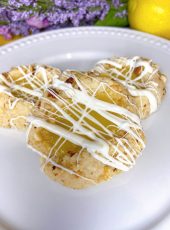Birthday cakes are as ancient as the Romans. They’re a symbol of America’s economic and familial shifts. This one from Southern Living is worth celebrating!
“All the world is birthday cake. So take a piece, but not too much.” – George Harrison.
I’ve always found the idea of celebratory cakes so sweet and romantic, especially the homemade kind. Don’t get me wrong – a fancy bakery cake is awe inspiring. In Atlanta, Alon’s Bakery is a gourmand’s dream. My mother-in-law always seems to find the most beautifully decorated and delicious cakes no matter where we’re celebrating, like this Tres Leches cake from Cecilia’s Cake Shop in Athens, Georgia. Honestly, as a Florida girl I can even attest to the steadfast trustworthiness of Publix bakery cakes too.
There’s a different kind of magic to a home baker’s cake, a kind of ugly, about to topple over, whole-hearted attempt. The kind with wonky candles and a lot of earnest hope – hope for the receiver’s joy in the moment and their year ahead. Maybe I love them because birthday cakes feel like an obvious moment in time. Imagine all of the times a group of people sang “Happy Birthday” to you, throughout your whole life, montaged into one movie clip. All those people and all those moments would represent such radical shifts in your life: your childhood best friend, when your grandmother was still with you, when your spouse and children came into your life. Ok, ok, I’m getting sentimental.
That’s just it. Birthday cakes are sentimental. Maybe that’s the other component about them that I love. They don’t serve a nutritional purpose beyond a treat. You don’t need them, but on the anniversary of your birth, someone wants to bring you a treat to commemorate it. It’s just so human – that way we do a little extra something to make some occasions special. And it’s so human that history suggests humans have been doing it for quite some time.

According to Reader’s Digest, Ancient Egyptians are sometimes credited with the “invention” of birthdays. They celebrated the coronation day of pharaohs as the day their leaders were re-“birthed” as gods. But it’s those Ancient Romans who are credited with celebrating the birthdays of mere mortals. Kathryn Argetsinger’s Classical Antiquity article “Birthday Rituals: Friends and Patrons in Roman Poetry and Cult” reports that the Ancient Romans celebrated three kinds of birthdays or “dies natalis”. In the private sphere, people celebrated the births of family and friends. In the public sphere, they celebrated the “births,” or founding, of cities, temples, and cults; they also publicly celebrated the births of emperors and members of the imperial family. It makes sense, right? Birthdays are so Roman – a kind of obsession with the meaning of time and the symbolism of the calendar, and hedonism here on earth.
Birthday celebrations at that time resembled a kind of religious ritual. They believed that each person was given a genius, or a spirit guardian, at the time of their birth. Every year on the day of their birth, they’d throw a party to thank their tutelary spirit for the last year’s protection and ask for protection in the year ahead. They wore white robes, burned incense, and ate ritual cakes. According to Food & Wine these celebratory cakes were made of flour, nuts, yeast, and honey. While today other people are expected to spoil you on your birthday, then it was your responsibility to spoil others on the day of your birth. You celebrated your own life by showing others your gratitude.
Food & Wine also reports that Ancient Greeks added candles to celebratory cakes. Worshippers would bring moon-shaped cakes as offerings to Artemis, the Goddess of the Moon and the Hunt; they added candles so the cake would glow like the moon. Various ancient cultures believed that smoke carried our prayers up to the gods, so it’s possible that this is also part of our “birthday wish” tradition.

I was surprised to see Food & Wine mention that only men’s birthdays were celebrated until the 12th century. A little historical sexism taking the wind out of the sails of my birthday boat! But (unfortunately) it makes sense. Birthdays were reserved for wealthy and powerful members of society; they were public rituals that marked the importance of an important person’s life. As Joe Pinsker writes for The Atlantic, it wasn’t until the late 19th century that middle-class Americans commonly celebrated their birthdays, and not until the early 20th century that it became a nationwide tradition. To that point – The Happy Birthday song wasn’t created until 1910!
This shift toward celebrating an average (American) Joe’s birthday is emblematic of major shifts in our economy, technology, and families, and it begins with children. Birthdays as we know them have their roots in the 18th century German celebration of “Kinderfeste.” Reader’s Digest describes the scene: on the morning of a child’s birthday, they’d receive a cake with lit candles – as many years as the child was celebrating, plus one, “the light of life,” for good luck in the year ahead. Adults would change out the candles all day long until after dinner. Then the child would make a wish – a secret they had to keep to themselves – and try to blow out all the candles at once.

Industrialization helped democratize birthdays in that they gave more families access to the expensive items needed to make a cake. Pinsker’s Atlantic piece offers even more insight into the dynamic shifts in American culture that made birthday celebrations part of our lives. For example, historians argue the celebration of children’s birthdays illustrate a cultural shift in how we thought of children. As families started having fewer children, they lavished more attention on them; children’s main value shifted from economic (as workers) to emotional (as the light and purpose of our lives.) Birthday celebrations also tell us about how industrialization shifted our perception of time. Clocks were rare in pre-industrial America. The 19th century saw an increase in the production of clocks – they began appearing in homes, and people began taking pocket versions with them when they were away from home. More people were required to follow the schedules of factories and trains; they had to be at work on time. With more acknowledgment of the passage of time, Americans became more interested with their own age – and aging. Doctors began using our age as a health assessment around the same time we started celebrating our birthdays.
There are thousands of options when it comes to birthday cakes. I love this one for a couple of reasons. I think it’s fun that it’s a (relatively) new recipe creation, introduced by Southern Living in its April 2000 issue. It’s simple and unassuming, but the chopped-up candy makes it feel birthday-special. And it’s my childhood best friend’s favorite. She always requests it if we’re lucky enough to be together during her birthday. Once we went camping and I brought the cake with us into the woods! We ate it huddled in our tents during a bad luck rainstorm. I hope that birthday shows up in her memory montage of birthdays past.
Candy Bar Cake
Recipe by Southern Living Course: DessertDifficulty: Easy12
servings30
minutes30
minutes1
hourIngredients
- For the chocolate cake
1 chocolate cake mix of your choice (~15.25 ounces)
Follow directions on back of box for eggs + add 1
Follow directions on back of box for amount of water, but replace with milk
Follow directions for on back of box for vegetable oil, but replace with melted butter
- For the frosting
1 (8oz) cream cheese, softened
1 cup powdered sugar
1/2 cup granulated sugar
10 (1.5oz) milk chocolate bars with almonds, chopped and divided
1 (12oz) container frozen whipped topping, thawed.
Directions
- Prepare batter and pour into prepared, greased and floured, pans (either 2 9-inch pans or 3 6-inch pans). Follow box directions for temperature and time. Cool for 10 minutes and remove from pans to cool completely on wire racks.
- For the frosting
- Beat room temperature cream cheese with both sugars
- Gently fold cream cheese mixture and chopped candy (except for ~2 bars) into the whipped topping
- Frost cake and use remaining chopped candy as garnish





